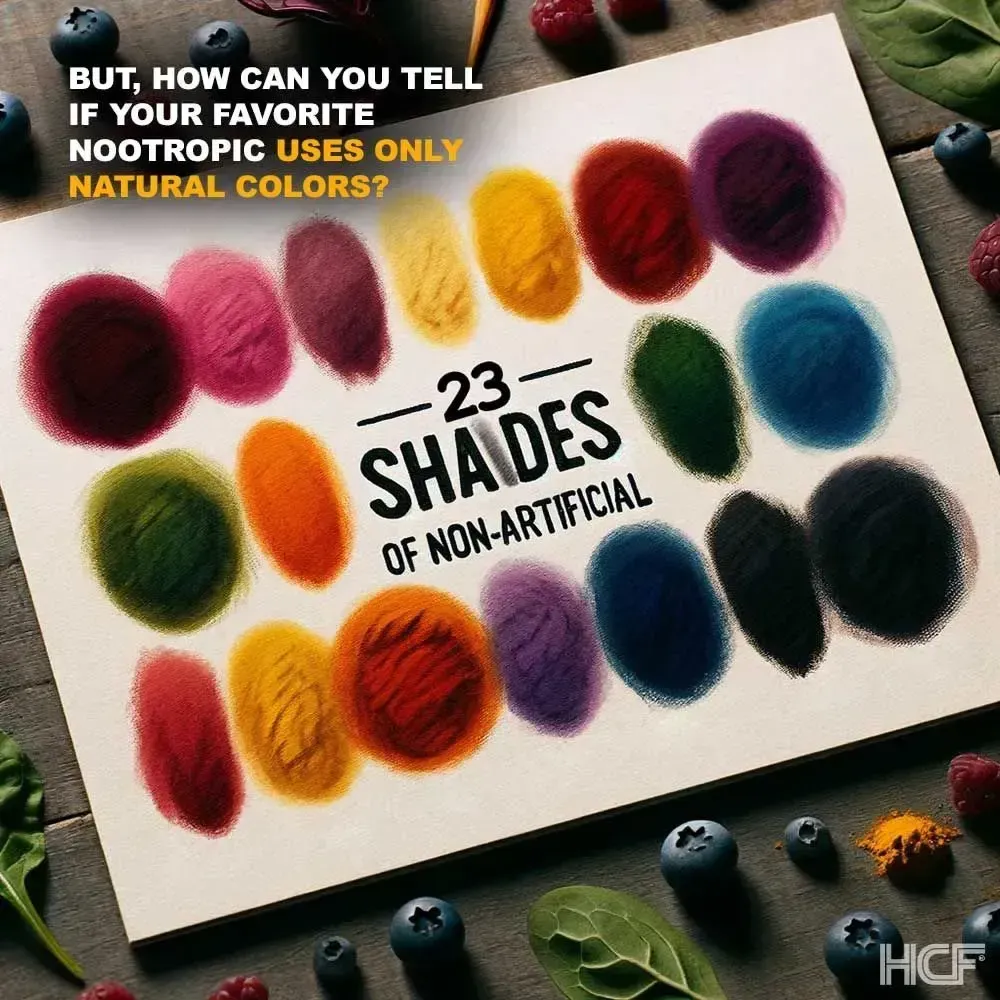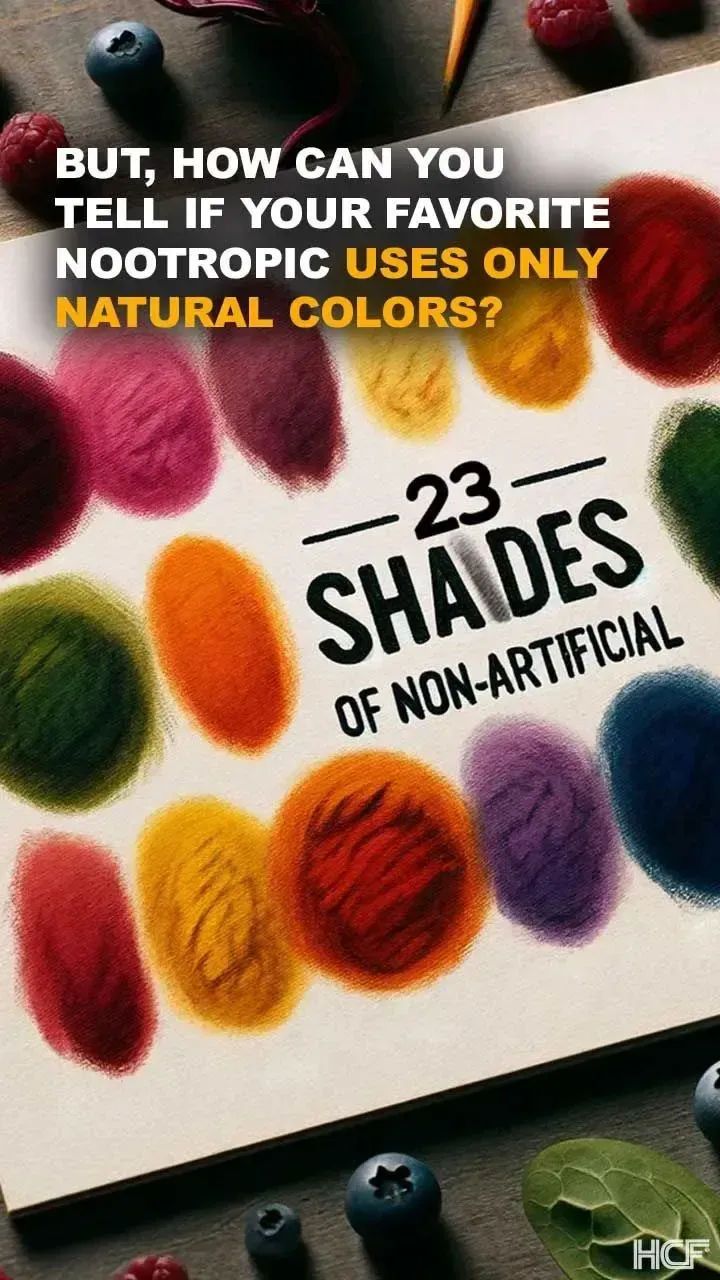
2EXCIPIENTS
23 Shades of Non-Artificial: The FDA-Approved Colorants in Our Microbeads
6 min read

Essentials
- The U.S. Food and Drug Administration (FDA) has been proactive in endorsing color additives derived from natural sources, moving away from potentially harmful artificial colorants that have been prevalent in the industry.*
- Many natural colorants may offer additional health benefits, including antioxidant and anti-inflammatory properties.*
Color is beautiful—when derived from natural sources, right? Because, in reality, who wants to ingest special artificial color number &##@? Fortunately, the Food and Drug Administration (FDA) has strict guidelines for both natural and synthetic color additives.1
It's a step in the right direction. A step away from potentially harmful artificial colors and additives that have been the industry standard for far too long.*2


Here's What to Look For and Why:
Annatto extract.
Often referred to as Achiote (in Latin American cultures), the Annatto extract is obtained from the Bixa Orellana tree's seeds (native to tropical regions such as Kenya, Ivory Coast, Mexico, and Brazil).
These seeds are covered in a reddish-orange pulp rich in carotenoid pigments (Bixin and Norbixin) responsible for Annatto's distinctive and vibrant orange-red color.
Beta-Carotene.
Past being an essential nutrient due to its studied antioxidant properties, Beta-Carotene can also be used as a color. This unique compound is found in yellow, red, and orange fruits and vegetables. For example, paprika, orange carrot, and saffron contain different types of carotenoids that can be used as colors.
Blue Spirulina extract.
This natural color is typically sourced from blue-green algae. In fact, Spirulina is not just a colorant but also renowned for its nutritional richness. It's packed with proteins, vitamins, and essential amino acids.
So why even settle for a synthetic blue color when you can choose this as an alternative instead? And potentially with some added benefits for your brain network (head, heart, and gut), too?*
Red cabbage.
Red cabbage is a versatile vegetable. Not only has it been used in many global cuisines and for its medicinal properties, but it's also the source of a natural color.
Purple sweet potato.
These potatoes are not just visually appealing but are also nutritionally dense. They contain anthocyanin pigments (known for their antioxidant and anti-inflammatory properties) and can be a good source of Beta-Carotene.
Paprika.
Derived from the Capsicum Annuum fruit, Paprika is a popular spice and a natural colorant. It adds a warm, reddish-orange hue to nootropics (and foods).
Red Carmine.
This colorant typically obtained from cochineal insects has been used for centuries—but primarily in cosmetics and food. The FDA has approved Red Carmine since 1977 for use in cosmetics, including those used on the eye area. On labels, you’ll likely see it listed as just "Carmine." Brands use it to give their products a deep red hue.
Riboflavin (Vitamin B2).
Many are likely familiar with Riboflavin's benefits for cognitive health. More commonly known as Vitamin B2, this nutrient is important for your body's cells' health, development, and operation. It can also help in converting food into energy for your three brains (Head [1st Brain], Heart [2nd Brain], and Gut [3rd Brain]).*3
However, what most don’t know is that Vitamin B2 can also be used as a colorant in nootropics. That’s true. In fact, its bright yellow hue has made it a popular choice (especially as consumers increasingly demand alternatives to artificial dyes).
Its intensity can be adjusted based on the desired shade of yellow and product application. Due to its water solubility, Riboflavin can be a great choice in liquid nootropics.
Turmeric.
A golden-yellow spice, Turmeric has been studied extensively for its anti-inflammatory properties—primarily due to its active compound, Curcumin.
Hibiscus.
Hibiscus, a genus in the Malvaceae family, is known not just for its ornamental beauty but also for its culinary and therapeutic applications. Its deep red color has made it a sought-after natural color, especially as the global market shifts towards clean-label nootropics.
Purple Carmine.
In the United States, Purple Carmine is approved by the FDA as a color additive in nootropics (as well as in foods and some cosmetics). However, since it's sourced from insects, the FDA mandates clear labeling to inform consumers. This is especially important for vegetarians, vegans, and certain religious groups who may want to stay away from insect-derived products.
Butterfly Pea powder.
As the name suggests, this vibrant blue powder is derived from the Butterfly Pea flower (a plant rich in bioflavonoids). But what’s more interesting is the science. Ongoing research is currently looking into the potential benefits of Butterfly Pea powder for cognitive health and emotional well-being.*4
Black/Purple carrot.
Black/Purple carrots (known for their deep, vibrant hues) have been farmed for centuries. But they are just now gaining traction as a color alternative in the modern nootropics industry.
Plus, black and purple carrots may have some added benefits since they are rich in anthocyanins (known for their potential neuroprotective effects).*
There's even ongoing research on the potential effects of black carrots on lowering the risk of developing neurological challenges.*5,6
Calcium Carbonate.
Calcium carbonate imparts a white, matte finish to nootropics. But beyond its coloring properties, Calcium Carbonate can also be used as a dietary supplement when the Calcium intake from diet alone may be insufficient.
Purple Carmine Lake.
It’s a variant of Carmine. Purple Carmine Lake is typically used for its deeper, more purplish hue.
Hibiscus fruit.
Besides its natural coloring properties, Hibiscus can also be an excellent source of Vitamin C and minerals.*
Red Radish.
Red Radish extract (which has a beautiful red color) is approved for use as a natural color by the FDA.
Elderberry.
Typically, elderberries are being studied for their immune-boosting properties.* In the United States, the color extracts from Elderberries are generally recognized as safe (GRAS) for use in foods and beverages by the FDA. They are categorized under 'natural coloring foods,' which means they are exempt from certification due to their dual role as food and colorant.
Chlorophyll.
This green pigment, essential for photosynthesis in plants, can also be beneficial for human health.
Beetroot Red.
Beets (Beta vulgaris) are root vegetables rich in vitamins, minerals, and antioxidants. Their deep red color is attributed to a group of pigments (known as betalains, specifically betanin).
Caramel color.
Derived from caramelized sugar, this colorant adds a rich brown hue. In terms of safety, Caramel Color was approved by the Joint FAO/WHO Expert Committee on Food Additives (JECFA), the European Food Safety Authority (EFSA), the U.S. Food and Drug Administration (FDA), and other similar authorities.
Red Carmine Lake.
Another derivative of the colorant Carmine approved by the FDA.
Blue Fruit Juice color.
Blue Fruit Juice color, often derived from sources like Blueberries, Spirulina, and Butterfly Pea flowers, is gaining traction as a color in the nootropics industry.
In the United States, the use of Blue Fruit Juice color as a colorant in foods and beverages is subject to FDA regulations.
While specific sources (like the Spirulina extract) have been approved by the FDA for certain uses, manufacturers must ensure that the Blue Fruit Juice color they use complies with FDA guidelines.